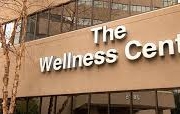Top Signs You Might Need Couples Therapy in Houston
Every relationship goes through ups and downs, but when the challenges begin to outweigh the joy, it may be time to consider outside help. Couples therapy has become an essential resource for partners who want to reconnect, rebuild trust, and strengthen their bond. In a bustling city like Houston, with its fast pace and unique relationship dynamics, knowing when to seek therapy can make a significant difference in a couple’s emotional well-being and long-term happiness.
In this post, we’ll explore the top signs that indicate you and your partner may benefit from couples therapy, especially if you live in the Houston area where access to skilled therapists is readily available.
1. Communication Has Broken Down
One of the most common reasons couples seek therapy is communication issues. When conversations frequently escalate into arguments or feel like they’re going in circles, it’s a sign that something deeper may be going on. You may find that you’re avoiding certain topics altogether just to keep the peace, or one partner dominates discussions while the other shuts down.
Effective communication is the backbone of a healthy relationship. Therapy can provide a neutral space to learn better ways to listen, speak, and understand each other’s perspectives—skills that are often harder to build without guidance.
2. Trust Has Been Damaged
Whether caused by infidelity, dishonesty, or unmet expectations, damaged trust is one of the most difficult challenges couples face. Rebuilding trust isn’t something that happens overnight; it requires patience, transparency, and a willingness to forgive.
If you or your partner are finding it difficult to move past a breach of trust, this is a strong signal that professional support may be necessary. A therapist can guide you through a structured process to rebuild that foundation, helping each partner feel secure again.
3. Emotional Distance Is Growing
Many couples experience periods of emotional disconnection—where you feel more like roommates than romantic partners. If you no longer feel emotionally close or miss the sense of partnership you once had, it might be time to consider couples therapy Houston specialists can provide.
Therapists can help you explore the root of this disconnect. Sometimes, the reasons are situational (work stress, parenting, etc.), but other times, it reflects unresolved issues that have been building over time. Either way, therapy offers a chance to reconnect and regain emotional intimacy.
4. You’re Constantly Having the Same Arguments
Every couple argues, but when the same disagreements repeat without resolution, it’s a red flag. Whether it’s finances, parenting, household responsibilities, or differing long-term goals, recurring arguments signal a deeper incompatibility or misunderstanding that needs attention.
Rather than continuing in a cycle of frustration, seeking couples therapy Houston professionals recommend can help break the pattern. Therapy introduces conflict-resolution strategies that allow both partners to feel heard, respected, and understood—even when they don’t agree.
5. Intimacy Has Declined
A drop in physical intimacy doesn’t always mean a lack of love, but it can point to underlying emotional disconnection, resentment, or unresolved conflict. If sex has become infrequent, routine, or nonexistent—and neither partner feels comfortable discussing it—this could indicate deeper relational stress.
Therapy creates a safe environment to talk openly about intimacy issues, helping couples identify any emotional blocks or past hurts that might be affecting their physical connection. For many, rebuilding intimacy starts with emotional healing, not just physical changes.
6. Life Transitions Are Taking a Toll
Big life changes—such as moving to a new city, having a baby, experiencing a loss, or changing careers—can put stress on even the strongest relationships. You may feel like you’re no longer on the same page, or that your individual coping styles are clashing under pressure.
Couples therapy can be a valuable resource during times of transition. A therapist can help partners support each other more effectively, develop shared goals, and manage stress in ways that strengthen rather than strain the relationship.
7. You’re Considering Separation or Divorce
If one or both partners have brought up the idea of separating, it’s a clear sign that something fundamental isn’t working. Before making such a life-altering decision, couples therapy can help you explore what’s gone wrong and whether reconciliation is possible.
Even if the ultimate decision is to part ways, therapy can assist in creating a respectful, cooperative process—especially if children are involved. It can also help partners process emotions in a healthier way, avoiding unnecessary resentment or conflict.
8. You Want to Strengthen a Good Relationship
Not all couples who go to therapy are in crisis. Some simply want to invest in their relationship by learning new tools to communicate, deepen their bond, or prepare for future challenges.
In Houston’s busy and diverse landscape, couples who actively seek growth rather than wait for problems to escalate often find greater satisfaction and long-term success. Therapy can serve as a proactive step toward a stronger, more resilient partnership.
Final Thoughts
Recognizing when your relationship could benefit from professional help is a sign of strength—not failure. Whether you’re facing trust issues, communication breakdowns, or simply feeling disconnected, couples therapy offers guidance, clarity, and a path forward. For couples in Houston, local therapists provide a variety of approaches tailored to the city’s dynamic population and lifestyle needs.
No matter the stage of your relationship, seeking help shows a shared commitment to growth and healing—something every lasting partnership deserves.











